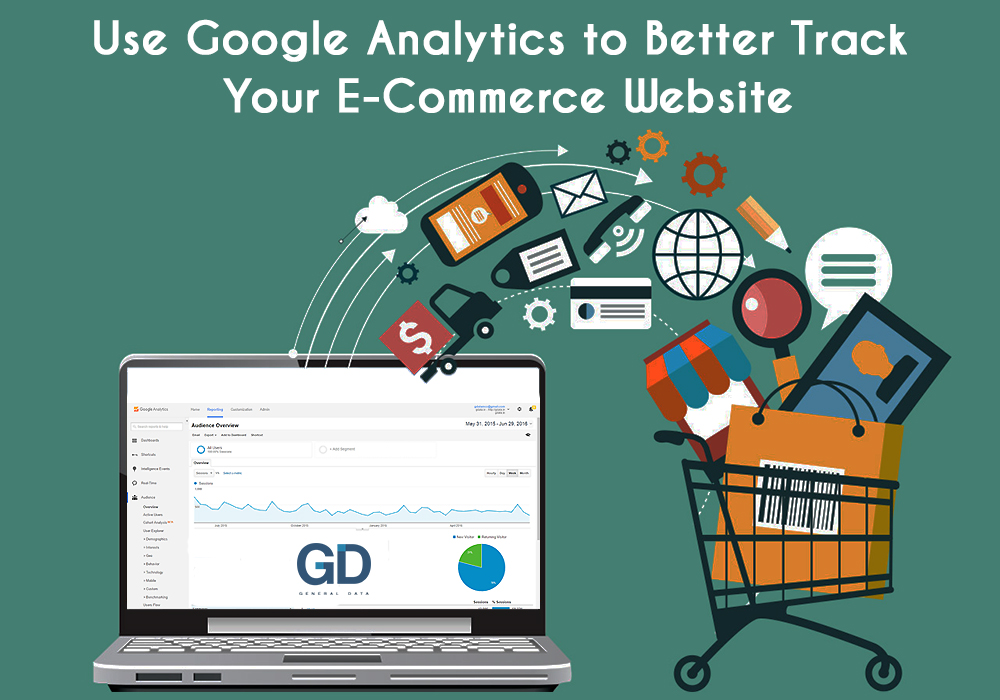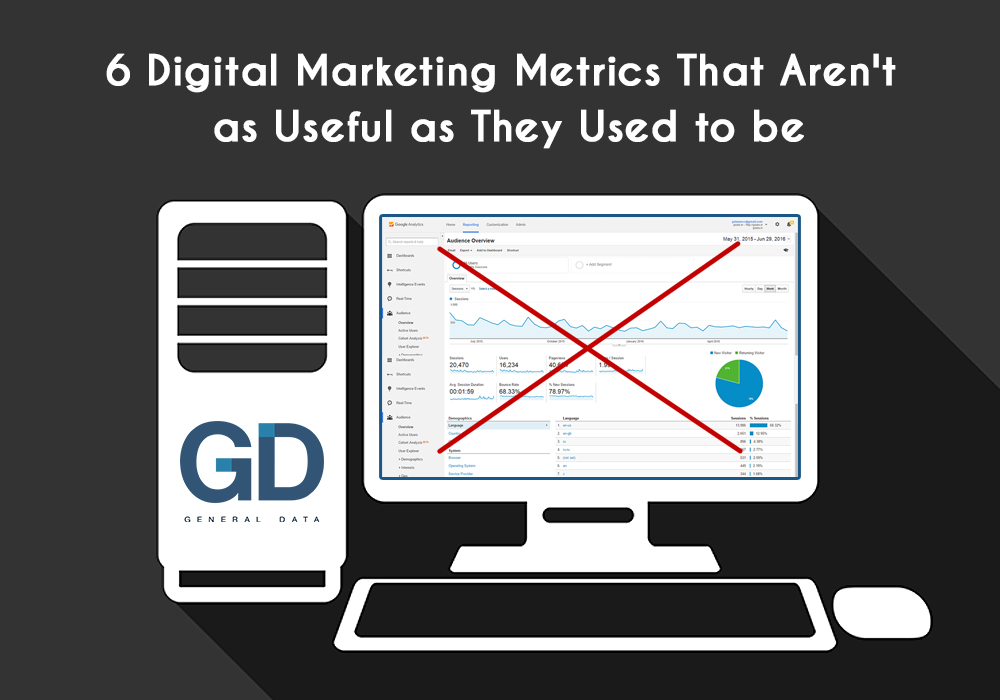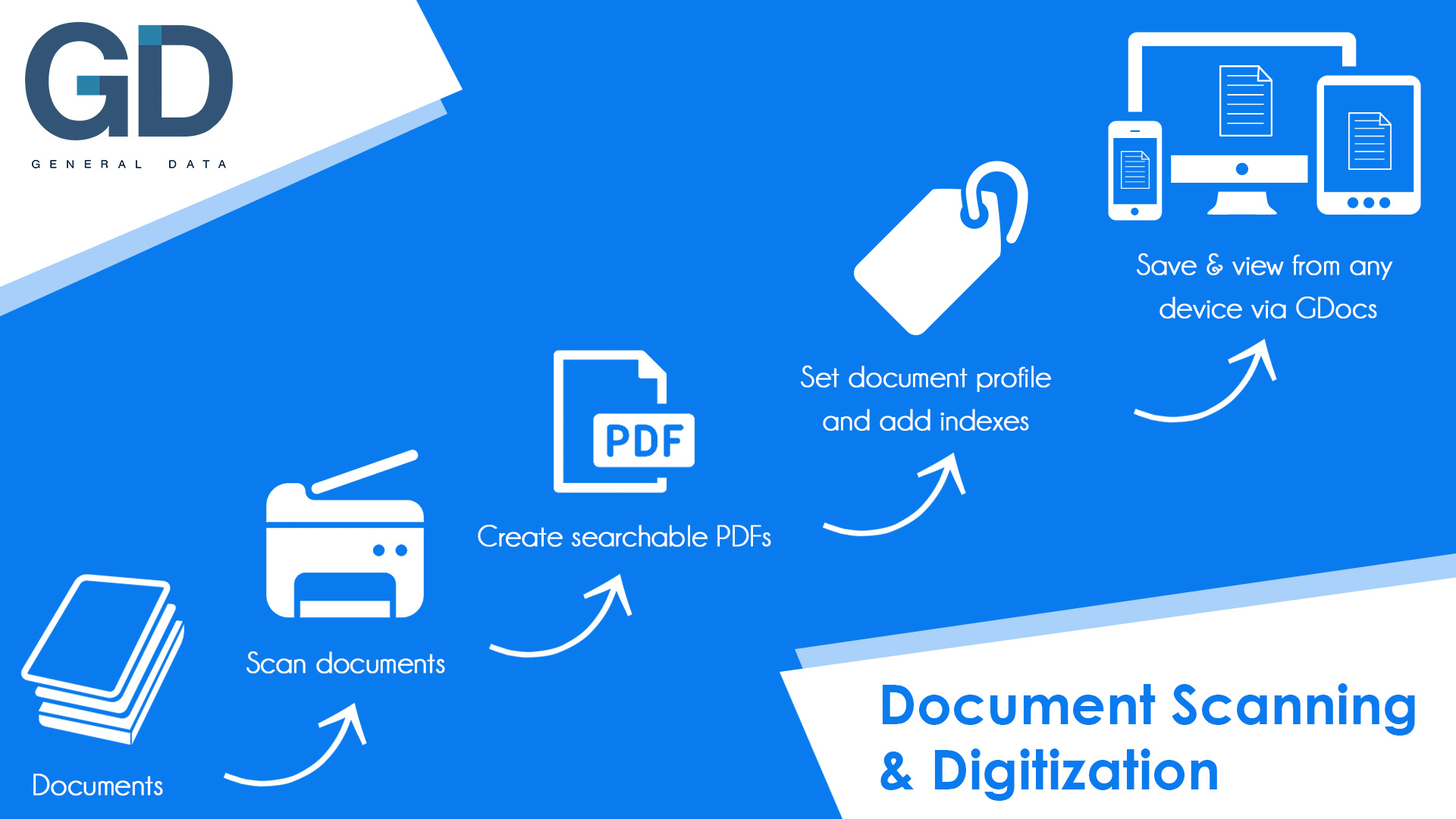
Zento, our Employee Expense Management Solution for businesses, was recently listed on FinancesOnline.com. FinancesOnline is an independent review & comparison platform for B2B, SaaS & Financial Software solutions.



See our listing at: https://reviews.financesonline.com/p/zento/
While Google Analytics (GA) provides a lot of standard metrics related to how your website is accessed and used, it also has dedicated sections related to E-Commerce tracking. With metrics like product performance, sales performance and customized goal tracking (like 'add to cart' and 'conversions'), GA is a vital platform to analyze for any budding or major e-commerce platform.
However powerful GA might be, at the end of the day it needs to be organized correctly. Marketers must know how to read and decipher the data GA generates to make tangible, actionable decisions.

Here are 8 simple hacks to get the most out of Google Analytics for E-Commerce:
- E-commerce Analytics
- Goal Configuring
- Filtering Own IP addresses
- Demographic Data Monitoring
- Link to Webmaster Tools
- Internal Site-Search Monitoring
- Custom Dashboards and Reports
- Annotation
1. Enable E-commerce Tracking
Enabling E-commerce tracking is the first step. If you are an e-commerce store, i.e. you sell online, you really need to know what is driving or, conversely, hindering sales. E-commerce analytics data includes revenue (total & segmented), products sold, conversion rates, average order value, etc., which can all be cross-referenced with and traced back to traffic sources, content views, on-site actions and user experience.
2. Configuring Goal Tracking
Sales data, while important, is not the only factor worth tracking. Your business may depend on other subsidiary information like how many people are signing up for your monthly newsletter or how many times has your brochure been downloaded. By setting up goals you can see which pages on your site are performing the best, which lead to a brochure download or custom inquiry or which social media platform led to goal completions.
3. Filter out your own IP address(es)
Every time you or a member of your internal team accesses a page on your website, your analytics data changes and, consequently, gets skewed. To prevent this, first identify the devices from which you are most likely to access the website. We then need to block the IPs of all those devices. To find out your public IP, you can simply Google 'What's my IP'. Once you add these individual IPs or IP subnets to a new GA Filter, your analytics data will exclude all internal traffic and show you only your customers' traffic patterns.
4. Monitor Audience Data
GA allows you delve deeper into user types as well, showcasing data like user behaviour by devices, geo location, demographics (age & gender), interests, and more. This section – under the Audience tab – helps you target different user groups even better and modify your marketing campaigns accordingly.
5. Link Analytics to Webmaster Tools
Google is usually cagey about displaying accurate keyword data to marketers in Analytics, but internal site search bars can prove to be a goldmine. Another way to retrieve real customer search data for your site is to link up Analytics to Webmaster Tools. While this is easy to do, it is not a default setting and is something people usually miss out.
6. Monitor Internal Site Search Data
If your store has an internal search bar to help customers find products, you can find out exactly which keywords are searched. Information like which products are customer favourites, which are hard to find, how people describe the products they are looking for, keyword ideas and more can be determined by monitoring internal site search.
7. Set Up Appropriate Custom Dashboards and Reports
The 'problem' with a tool as powerful as GA is the sheer number of metrics it offers – a marketer can find himself overwhelmed with the number of extractable reports on offer. The solution is to create your own custom dashboards & reports that only deliver pertinent, actionable information to you and your stakeholders.
8. Add Annotations for Important Events
Annotations are personalized notes or comments you can set up for all important activities or events on your analytics account. For instance, a new product category added, a particular best seller ran out of stock, an AdWords campaign saw a dip etc. Setting an annotation saves you the tedious effort of matching your analytics data to store changes.
To set up a new annotation you simply need to click 'Create a New Annotation' button to the right after the performance graph. We hope this article helps you optimize GA for your E-Commerce driven website. Setting up & customizing GA is part of our SEO Scope of Work. Do get in touch with us to find out how we can help with your Online Marketing efforts.
“This is how it is supposed to be”, while a credible stance on many topics, doesn't really apply to Digital Marketing analytics & reports. Digital Marketing is still in a state of flux. As advertising & discovery platforms like Google Search, Google AdWords, Facebook Advertising change & evolve, metrics we rely upon also change, or get scrapped altogether.
These changes can be attributed to changes in the ways platforms like social networks, ad networks, affiliate networks etc. function, changes in security & user data retention policies, or simply because a newer metric has suddenly become accurately measurable and hence more reliable and effective.

Like fashion, even metrics are sometimes subject to trends & expiring shelf lives, here are a few metrics that aren’t as useful as many would have you believe:
1. Display Ad Impressions
Imagine a scenario where your ad is out there but you have no idea how many people actually saw it. With seemingly accurate Ad Impression statistics readily available, anybody would assume this simply doesn’t apply to online advertising. Unfortunately, it very much does, and to an alarming degree.
An Impression is registered if 50% of an ad’s pixels are in view on a screen for a minimum of one second – as defined by the Media Rating Council. As Google points out with this infographic, over 55% of Impression counts are in fact not actually viewed! And that’s an alarmingly high rate when you’re calculating RoI and campaign impact as an advertiser. This usually happens because the ad served is either ‘below the fold’, out of view, or because the ad loads in a background tab or popup.
Of course, in the absence of more accurate data, we still must take Impression metrics into consideration, but they must be discounted to a very high degree. So while this isn’t a ‘metric that needs to die’, it does have to be looked upon with weighted skepticism.
2. Anything to Do with Referred vs. Direct vs. Organic Segmented Traffic
Traffic source data has become increasingly unreliable. How much so? Luckily, Groupon did a study and shared their findings.
In their experiment, they saw that they lost 60% of their supposedly “direct” traffic when they deindexed their entire site for 6 hours.
This basically means 60% of their organic traffic was being classified as direct, rendering the reliance on traffic by source nearly irrelevant, since it simply was nowhere close to accurate.
This just goes to show how much SEO efforts can be disregarded by mistake. Looking at your Traffic Source data, you may feel SEO is irrelevant due to the high amount of direct traffic your site is receiving. In reality, most of that direct traffic is actually attributed to organic search engine results.
Segmentation reporting is downplaying SEO’s role your content marketing efforts. Avoid relying on it and you’ll find a much higher RoI than the data conveys.
3. Google Webmaster Tools Metrics
Google Webmaster Tools have a lot of important features, but when it comes to keyword metrics, you better think again.
The numbers are simply not accurate, with deviations in the 100s of percentage points.
Simply compare the numbers you see on Google Webmasters with Google Analytics & Google Adwords, you’ll find stark contrasts.
These numbers are only useful to identify trends and gauge scale, keep in mind that these metrics are just estimates and not actionable, accurate numbers.
4. Facebook Page Likes
A long time ago, you could create a Facebook page, get people to like it, and guarantee yourself spots on your followers’ News Feeds with your posts & updates. Quality content stood a great chance of organically going viral. This was correlated to the number of page likes you had to begin with.
Not anymore.
Under the pretext of clutter (higher volumes of content being generated), Facebook has become increasingly selective with the content it serves its users on their News Feeds. Unsurprisingly, this has meant that over time, sponsored (paid for) content has been gaining prominence. That's actually a bit of an understatement. Some reports & observations claim organic reach for business pages has been trending downwards so precariously that nowadays it lies somewhere close to 0! User engagement with organic content is less than 1% as well.
Of course, Page Likes still serves as a reliable indicator as to the maturity level of a page. Pages with likes in the millions will, in absolute terms, reach more people organically than pages with likes in the 100s or 1000s. But that really isn’t saying much considering how they have, for all practical purposes, been ‘phased out’ over time.
5. Keyword Rankings
Change is the only constant – This is a phrase which best suits this metric.
Various factors shoutingly suggest that Keyword rankings aren’t as accurate as data will have you believe. Factors like results personalization, changes in the search algorithm, geo-location are the main factors, among others.
6. PageRank
While PageRank was once considered reliable and accurate, it is no more so. Google themselves have slowly stop prioritizing their PageRank toolbar and by the time this post goes live, there’s a good chance it would have been abolished altogether.
With so many changes taking place in Online Advertising, its execution & measurement, and the fact that marketers keep trying to game these numbers and platforms keep having to adopt counter-measures, many metrics, especially the ones listed above, have become increasingly unreliable. As a marketer, it has become increasingly important to be discerning in your evaluation & study of traffic data.
Evolve as industry standards & reliable metrics change, else you’ll be trying, futilely, to optimize your marketing strategy based on faulty data.
Digitization has been the focal point of the India story over the past 2 years – having been heavily propagated by Prime Minister Narendra Modi under the Digital India banner. For businesses, converting physical documents into digital files and then managing all that business data using a Document Management System (DMS) fits in neatly with the Digital India story.

Here are a few ways in which scanning your business documents and indexing them on a DMS are beneficial to businesses:
Reduce in-house physical storage requirements
Allocating office space to store physical documents costs a lot. Digitizing documents eliminates the cost of finding as well as managing a physical storage space. You can utilize that same space for other, more productive purposes, while enlisting us for records management. We store your documents at our location at a far lower cost which takes care of holding onto original physical for record keeping purposes.
For daily operations, your workforce simply logs into our online web-based Document Management System and acceses, shares, and edits the document there itself, eliminating the need to requisition and track down a physical document stored amongst thousands of other files and papers.
Improve the scope for collaboration
Imagine a scenario where multiple people have to work on the same document. By having a digital copy, it becomes much simpler and cheaper for multiple stake holders to access the same document compared to taking several printouts. In addition, you can have a document check-out check-in process in place for documents still in process, so everybody knows who the ‘owner’ of a document is at a given point of time. Once a document is digitized, everybody will not only be able to access it at the same time, but also from different locations and from different devices.
Find documents quicker
Paper records through the years tend to pile up and risk being misplaced. With a DMS, you can find documents instantly. When you scan and upload a physical document, OCR (Optical Character Recognition) picks up all the document text content, thus enabling you to find documents based on their content, not just the document name & title. So if you forget a document name and remember just a few words, a simple search of that string will return your document.
You can even search & find documents based on other metadata like Date Created, Date Last Modified, Author, Topic, Document Type, and many more.
Secure Access
DMSs can be hosted on private/hybrid cloud environments or on an in-house server. Good DMSs support 256bit encryption, which keeps your business information very secure. You can even open access to certain areas of your virtual filing system or even individual files to outside stakeholders, while leaving the rest of your information accessible only internally.
Access rights management allow you to specify who has rights to view, edit, download and delete different types of documents.
General Data P. Limited offers Document Scanning & Digitization services and DMSs for both SMEs and Enterprises. We help you select the solution that fits your specific requirements and budget. Contact us to learn how we can help you manage your business documents better.
Searchers reach your landing page after clicking your Ad on Google. This landing page is where you have control over what your users see and experience, and so, this is where you must incite a Call-to-action from your visitor – whether an enquiry form submission, a newsletter signup, a phone number to call on, or an e-commerce conversion.

When you next reach a landing page, take a look at how it’s put together. Is the landing page optimized? How can it be improved to elicit a user-action. As a Digital Marketing Agency, we take into consideration many factors when designing and developing landing pages, here are some of the important things to keep in mind:
End Goal
Always chalk out your end goal before structuring the landing page. Do you want to capture an email address or some other information or do you want the visitor to perform a different action? Some products and services require a two-way dialog with your sales team, in which case highlighting your phone number in multiple places becomes important. Enquiry forms are probably the best call-to-actions since they’re quick and easy for visitors to fill out and minimizes the effort required by them.
Target Audience
Your landing page needs to speak to your target customers. The most straight forward way of doing this is to gauge and outline personas of your target customers and then plan the individual elements of your landing page around them. This is imperative when deciding the theme & color scheme of the page, writing copy, including a call to action and balancing the amount of content and vertical length of your landing page.
Also Read: 9 Tips to Optimize Your SEM Campaign
Powerful Call to Action
The call-to-action is where you ask the visitor or reader to initiate an engagement with you. How you word and graphically represent your call-to-action(s) affects your conversions the most. Remember that your audience has a short attention span and will be evaluating your competitors before initiating a dialog with you. You need to convince them that your offering matches their need.
No Distractions
The aesthetic value of a landing page must never take away from its essential purpose. There’s no reason why your landing page shouldn’t be visually appealing but be careful that you don’t distract visitors away from your call to action.
Also, do not overwhelm your visitor with content. A landing page should be short and succinct. While you may feel the need to inform your visitor with as much information as possible, this usually works against you when inciting a call-to-action. Bullet points, short sentences and visual representations of information all help in keeping your landing page to the point.
Write to Sell
If your landing page is eventually not converting potential customers into sales, there is something wrong with the way your content is written. This is where knowing how your audience behaves matters because you can tailor the entire landing page around how they purchase products and services. Appeal to the needs, wants and desires of your target customers.
Think Colours
Colours are the dimensions that lend beauty to vision. There is a deep level of psychology behind the use of colour and it can be an extremely valuable tool when utilized properly in your landing page. The correct colour combinations in harmony with the brand make the visitor feel welcome and confident of the brand.
By and large, web services use soft color palettes, b2b landing pages are more direct and less fussy, and when selling consumer products, the product images speak for themselves.
Test, Test and Test Some More
Even if you create your landing page using all the best practices and guides available, its still not guaranteed that your page is perfectly optimized. While you may be getting conversions, without A/B & multivariate testing – serving multiple pages to different visitors for the same ads - you don’t know whether another version of your landing page will generate a higher conversion rate. You could create and pit radically different landing pages against each other or just modify individual elements and launch multiple versions of the same page with minimal change.
Properly tracking your conversion data as a result of A/B and multivariate testing will help you improve your landing pages using actionable insights.
Keeping the above points in mind when designing landing pages will undoubtedly help you optimize your paid Google Adwords & Display Network campaigns, and any other paid campaigns like those on Facebook & Twitter. We’ve used the above pointers to great effect for ourselves and our clients. If you’re interested in running a paid ad campaign, do get in touch with us to see how we can help.
JICS Logistic Limited (JICS) is a national level end-to-end solution provider in the fields of warehousing, bulk commodities handling and collateral management of commodities, with over 20 state-of-the-art warehouses spread across the country.
- WordPress CMS
- Dynamic Design
- Bespoke Design
Gorakhram Haribux, incorporated in 1958, is a part of the 50+ year old ALLSTATE Group provides top class service in Refrigeration, Transformers, Photography and Leisure equipment, Software development, Document imaging and management. Our group Companies have agreements with Fortune 500 Companies viz. Kodak Ltd., GEA, DuPont etc.
Rediscover your dynamic balance through our happy detox wellness retreats at Cignella in the tranquility and peace of Tuscany. Delicious food that detoxes, massage and yoga that invigorates and a whole lot more!! Enjoy an enviable location with elevated views over the Tuscan countryside and across the stunning Val D’Orcia world heritage site. Cignella Wellness Retreats are a fun and happy way to recapture your youth and vigour.
Equip Offshore Pte Ltd is an organization incorporated in Singapore, with the purpose of providing specialised products, systems and services to the Oil & Gas industry.
The group possesses over 30 years of industry experience and is active in both the upstream and downstream industry, where we offer a variety of products to the spectrum of activities associated within this industry.
Equip Offshore provides clients with both technical and sales for support for oil & gas related products; beginning from project inception, followed by involvement in negotiations and culminating in timely project execution and delivery.
ClickForCoach is an innovative online service to bridge the communication gap between students/learners and teachers/coaches. ClickForCoach has been conceptualized with the aim to bring the two together in a professional manner.




















